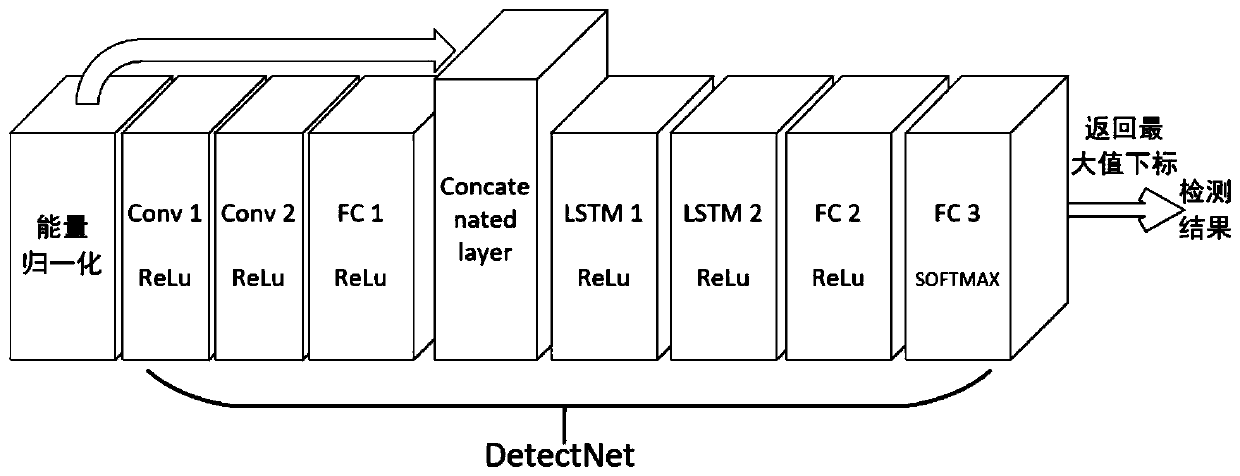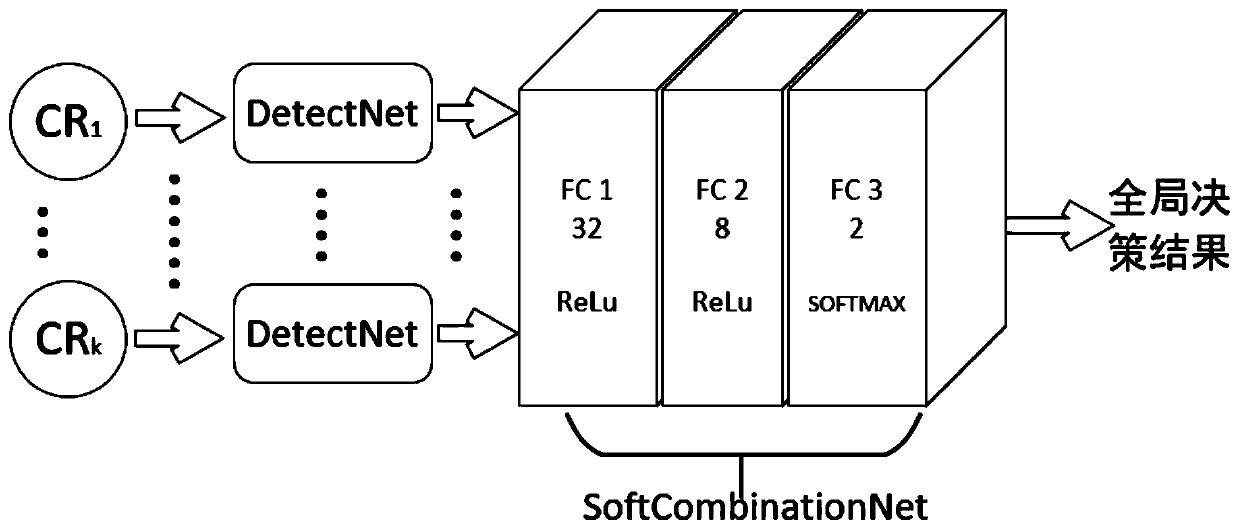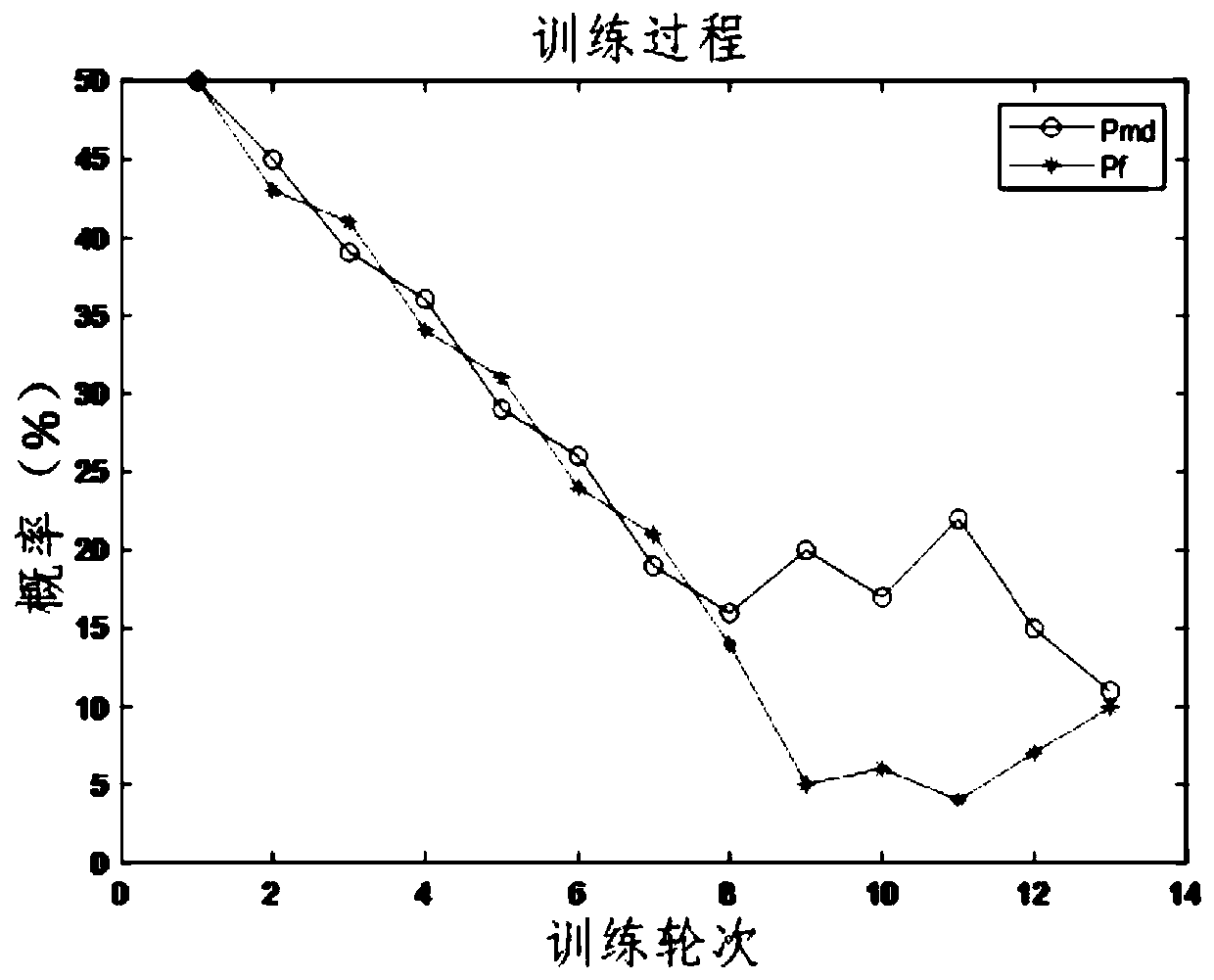Signal detection method based on deep learning
A signal detection and deep learning technology, applied in the field of signal detection based on deep learning, can solve the problems of limited application, false alarm probability and high probability of missed detection, and achieve enhanced detection performance, strong nonlinear mapping fitting ability, and improved detection. performance effect
- Summary
- Abstract
- Description
- Claims
- Application Information
AI Technical Summary
Problems solved by technology
Method used
Image
Examples
Embodiment Construction
[0032] The specific implementation manner of the present invention will be described in detail below in conjunction with the accompanying drawings and examples.
[0033] figure 1 A single-node detection neural network structure diagram is given, which is named "DetectNet" below. The DetectNet consists of two convolutional layers (Conv1 and Conv2) with 60 filters of size 10, a 128 neuron The fully connected layer (FC1), an input combination layer (Concatenated layer), two LSTM layers of 128 neurons (LSTM1 and LSTM2), a fully connected layer of 128 neurons (FC2) and a fully connected layer of 2 neurons (FC3) composition. Except for the last fully connected layer that uses SOFTMAX as the activation function, the rest of the network layers use ReLU. The input of the neural network is a time-domain sampled signal vector, and the output is two types of probability vectors of the existence and non-existence of the main signal, and the larger one is the single-node detection result....
PUM
 Login to View More
Login to View More Abstract
Description
Claims
Application Information
 Login to View More
Login to View More - R&D Engineer
- R&D Manager
- IP Professional
- Industry Leading Data Capabilities
- Powerful AI technology
- Patent DNA Extraction
Browse by: Latest US Patents, China's latest patents, Technical Efficacy Thesaurus, Application Domain, Technology Topic, Popular Technical Reports.
© 2024 PatSnap. All rights reserved.Legal|Privacy policy|Modern Slavery Act Transparency Statement|Sitemap|About US| Contact US: help@patsnap.com










